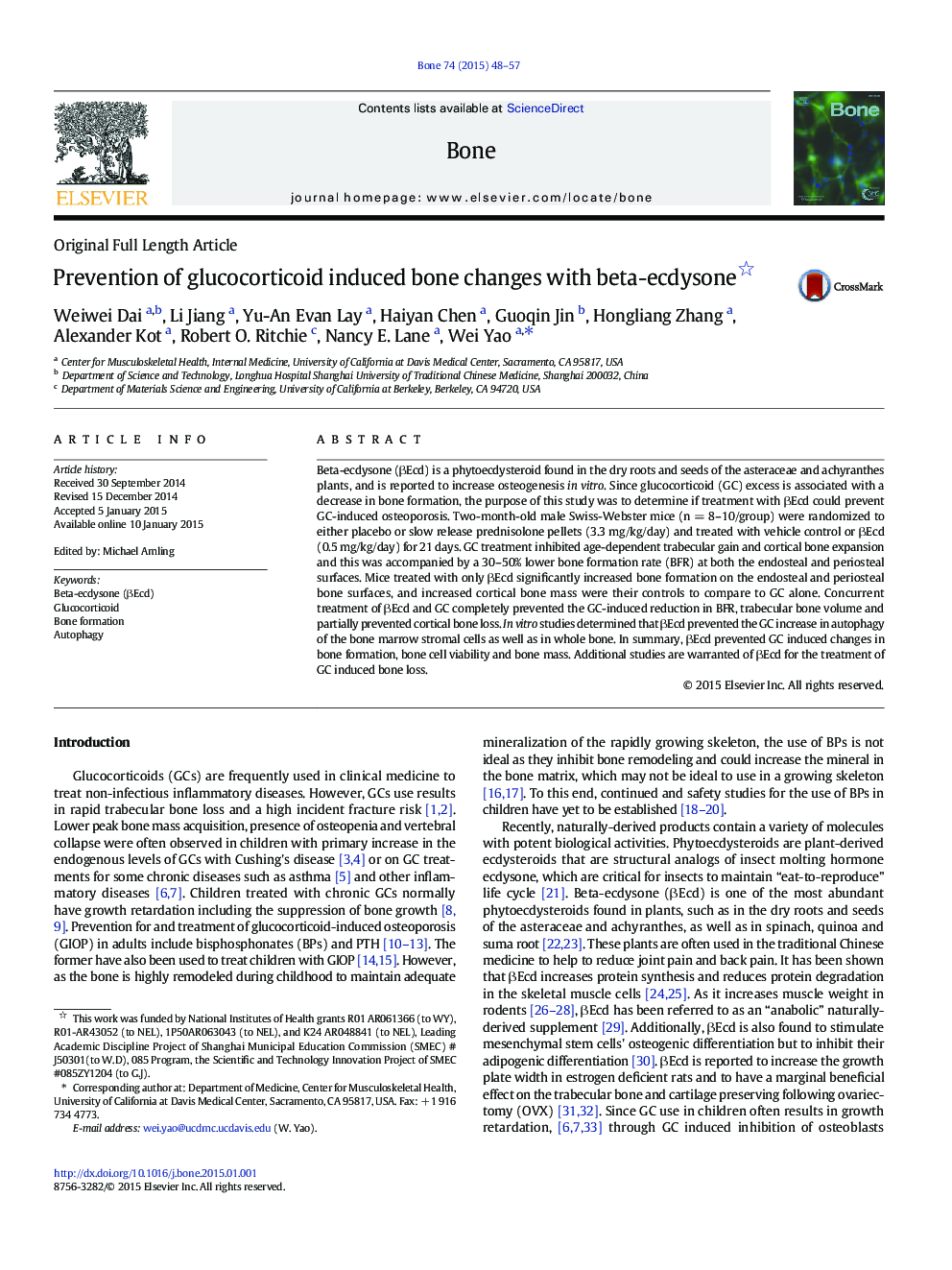| Article ID | Journal | Published Year | Pages | File Type |
|---|---|---|---|---|
| 5889639 | Bone | 2015 | 10 Pages |
â¢Beta-ecdysone (βEcd) completely prevented the GC-induced reduction in trabecular bone formation and bone strength.â¢Î²Ecd partially prevented the GC-induced reduction in cortical bone formation and bone strength.â¢Î²Ecd stimulated bone marrow stromal cells differentiation into osteoblastâ¢Î²Ecd maintained the autophagy level in the bone, which was otherwise suppressed by GC.
Beta-ecdysone (βEcd) is a phytoecdysteroid found in the dry roots and seeds of the asteraceae and achyranthes plants, and is reported to increase osteogenesis in vitro. Since glucocorticoid (GC) excess is associated with a decrease in bone formation, the purpose of this study was to determine if treatment with βEcd could prevent GC-induced osteoporosis. Two-month-old male Swiss-Webster mice (n = 8-10/group) were randomized to either placebo or slow release prednisolone pellets (3.3 mg/kg/day) and treated with vehicle control or βEcd (0.5 mg/kg/day) for 21 days. GC treatment inhibited age-dependent trabecular gain and cortical bone expansion and this was accompanied by a 30-50% lower bone formation rate (BFR) at both the endosteal and periosteal surfaces. Mice treated with only βEcd significantly increased bone formation on the endosteal and periosteal bone surfaces, and increased cortical bone mass were their controls to compare to GC alone. Concurrent treatment of βEcd and GC completely prevented the GC-induced reduction in BFR, trabecular bone volume and partially prevented cortical bone loss. In vitro studies determined that βEcd prevented the GC increase in autophagy of the bone marrow stromal cells as well as in whole bone. In summary, βEcd prevented GC induced changes in bone formation, bone cell viability and bone mass. Additional studies are warranted of βEcd for the treatment of GC induced bone loss.
